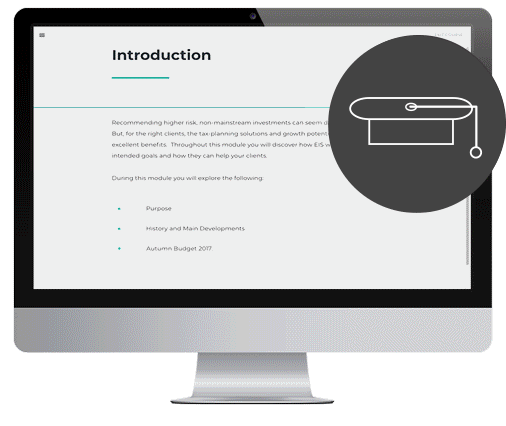Online learning on EIS and SEIS
Part of the Tax and Estate Planning Accreditation
Reaccreditation course

List and explain the criteria that govern whether a company and its proposed share issue qualifies for the EIS and/or SEIS reliefs
Explain the rules that investors in EIS and/or SEIS qualifying shares must adhere to if they are to receive and maintain the full benefits of the reliefs available
Define some of the key risks associated with EIS and SEIS
Explain how Income Tax Relief, EIS CGT Deferral Relief, IHT Relief, Tax Free Growth and Loss Relief affect the income gained from EIS investments
Explain how Income Tax Relief, SEIS CGT Reinvestment Relief, IHT Relief, Tax Free Growth and Loss Relief affect the income gained from SEIS investments
Explain what aspects you would take into consideration when assessing client’s suitability for EIS or SEIS investments and define how you would conduct research and due diligence on providers.
Detail the differences between the rules applicable to EIS and those applicable to SEIS
In partnership with

“The EISA is delighted to support and endorse Intelligent Partnership’s EIS and SEIS e-learning accreditation as the industry standard for learning and development on SEIS and EIS for regulated financial advisers and other professionals.”
“A useful course which covered the key areas of EIS investment.”
“Great base knowledge of EIS to keep in the background of your mind when advising on investments.”
“A very well rounded course. ”